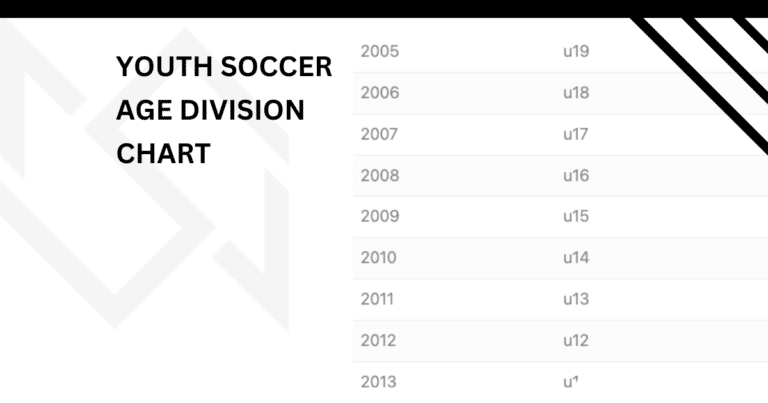Soccer Substitution Rules: How Many & Why
For most parents and fans, the soccer substitution rules can be complicated. When can a player go in? How many substitutions can a team make? What do they have to do to get into the game? You get the idea.
Key Takeaways From This Article:
- In professional soccer, each team is allowed to make each soccer team is allowed to make up to five substitutions per game (source).
- In youth soccer, the maximum number of substitutions varies and some leagues institute unlimited subs. [jump to league rules]
- A player who receives a red card cannot be substituted. That team needs to play with one less player.
- Substitutes must wait at the center of the field and only go on once another player leaves the field of play.
Soccer substitutions can sometimes change the course of the game. The offensive energy that comes in when a team is down by one can even the game up.
There’s a certain strategy involved when it comes to subbing during soccer games.
In professional soccer, one of the most important things to know about substitutions is that they are permanent. Once a player is substituted, they cannot return to the match.
In youth soccer, it’s important to get everyone in and ensure they are developing under your guidance.
By understanding the soccer substitution rules, you can inject a little bit of strategy when coaching or watching a game. In this article, you will learn the rules around soccer substitutions.
Basic Soccer Substitution Rules
Number of Substitutions Allowed

According to the IFAB Laws of the Game, each soccer team is allowed to make up to five substitutions per game.
However, this rule may vary depending on the league or tournament. It’s important to check the specific rules and regulations of the competition you are participating in to avoid any penalties or disqualifications.
For example, my son’s U14 MLS NEXT team last year was allowed unlimited substitutions per half but the player being subbed out cannot go back in again that half.
This year at U15, a player can not re-enter the game if they are subbed off. I don’t agree with this for 14 year-olds but rules are rules.
When Can Substitutions Be Made?
Substitutions can only be made during a stoppage of play.
A stoppage includes a break in halftime, when a foul or violation is called, the ball goes out of bounds, a goal is scored, or a player injury occurs on the field.
It’s important to note that the referee must be notified before any substitutions can be made.
How Are Substitutions Made?
The player being substituted must leave the field of play before the substitute can enter.
The player who is subbing in must enter the field from the designated substitution zone, which is usually located near the halfway line on the touchline on the bench side.
Once a substitute enters the field of play, the substitution is permanent and cannot be reversed.
Other Soccer Substitution Rules

Substitutions For Head Injuries
If a player is suspected of having a head injury, they may be temporarily substituted so that they can receive medical attention.
This temporary substitution will not count towards the maximum number of substitutions allowed for a team.
The substituted player may return to the field of play if they are deemed fit to continue by the onsite trainer or medical staff.
Substitutions For Other Injuries
If a player is injured and cannot continue playing, they may be substituted at any time during the game.
This substitution will count towards the maximum number of substitutions allowed for a team.
The injured player cannot return to the field of play unless the referee allows it.
Substitution Order
When making substitutions, the order in which they are made is important.
If a team wishes to make more than one substitution simultaneously, they must indicate the order in which the substitutions are to be made.
The player who is to be substituted first must leave the field of play before the second substitution can be made.
Can a Player Who Receives a Red Card Get Subbed Out?

No. If a player receives a red card, they must leave the field of play immediately and cannot be substituted.
The team must continue playing with one less player for the remainder of the game.
However, if a player receives a yellow card, they may be substituted before leaving the field of play.
Controversies Surrounding Soccer Substitution Rules
While soccer substitution rules are designed to provide a fair and flexible system for teams to make changes during a match, controversies have arisen surrounding the use of substitutions.
Two of the most common controversies I see are:
Faking Injuries to Waste Time
One of the most controversial tactics in soccer is faking an injury to waste time. This tactic is often used by teams that are winning and waste time on the game clock.
This tactic can be frustrating for the opposing team and fans, as it can disrupt the flow of the game and make it difficult for the other team to make a comeback.
A couple of ways to combat this tactic is to introduce a time penalty for players who are seen to be faking injuries and give out yellow cards for faking injuries. This would discourage players from using this tactic and would ensure that the game continues its flow.
Substitution Time-Wasting Tactics
By making a substitution, a team can take their time to make the change, forcing the referee to add extra time to the game.
This can be frustrating for the opposing team because it wastes precious minutes.
Referees can encourage players to run off the field if they are getting subbed out. They can also add in stoppage time for the wasted time if it is obvious.
I’ve seen a ref give out a yellow card for this at a youth game and I respect that! Faking injuries and wasting time should have no part in today’s youth games.
Substitutions in Extra Time
Typically, a team will be awarded an extra substitution in extra time.
For instance, during the 2022 World Cup, each team had five substitutions. If it went into extra time, each team would be able to sub a sixth time.
In some cases, if a team has a good finisher on the bench, the coach will sub them in just in case it goes into a penalty shootout.
What Does a Super-Sub Mean?
A super-sub is a player who was not in the starting line-up to begin the game but comes into the match and has a significant impact on the outcome of the game.
A super-sub can be a game-changer, turning the tide of the game in favor of their team. They can come on as a substitute and score a crucial goal, make a game-saving tackle, or create a game-winning assist.
These types of players make organizations and coaches look like heroes. On some occasions, teams may not have their best finisher starting the game. But, they may be used in the second half to spark the offense.
Super-subs are usually players with a specific skill set, such as pace, dribbling ability, or aerial prowess, that can be used to exploit weaknesses in the opposition’s defense.
College Soccer Substitution Rules
NCAA soccer has established an unlimited substitution rule.
Teams can make as many subs as they want but there’s no re-entry for a substituted player in the 1st half, one re-entry in 2nd half, and no re-entry in overtime periods (when there is OT).
Youth Soccer Substitution Rules
It’s difficult to provide a rule of thumb as to how many subs each team can make. Each age group and league is different.
Most younger age groups have unlimited substitutions.
While many leagues U15 and older mimic the professional rules.

In most youth soccer leagues, substitutions are allowed at any stoppage of play, such as a throw-in, goal kick, or corner kick.
Here are some official substitution rules of a few U.S. national youth leagues…
MLS NEXT Substitution Rules
For U13 and U14 Games, there will be unlimited substitutions over three (3) moments per half, plus half time, with no re-entry per half.
For U15, U16, U17, and U19 Games, there will be unlimited substitutions over three (3) moments in the game, plus half time, with no re-entry after exiting the match.
Girls Academy (GA) Substitution Rules
All GA games will have a maximum of seven (7) substitutes per game with no reentry per half across five “opportunities”, no more than 3 opportunities per half.
Halftime does not count as an “opportunity”.
ECNL Rules
For age groups U13-U18/U19: There can be a maximum of seven (7) substitutions per half.
Players may not re-enter in the same half.
Importance of Substitutions in Youth Soccer

In my 10 years of coaching and watching youth soccer, I’ve seen many games lost and won with the bench.
At the same time, I’ve also seen many players and parents dejected at their child’s playing time.
Coaches should go into each game with a rough game plan of when they’ll substitute. This will make it so much easier for you. By having a strategy, you can go everyone in at appropriate times.
Of course, some players will be gassed earlier than expected so you may have to improvise but outlining subs can help you make quicker decisions so you can focus on the field.
Also, for U11 teams and younger, I think even playing time throughout the season is fair. If you have a tough game, maybe the stronger players play more but if the next game is less competitive then the bench players will get more field time.
At the end of the day, you want these kids coming back next year. If they work hard in practice, reward them with more playing time!
Final Thoughts
I hope these substitution rules and guidelines help you understand the game more!
Substitution rules are more cut-and-dry in professional matches compared to youth games. But, the same process applies (i.e. – wait at the half field, can’t go in until the player gets off the field, etc.)
If you want to fully understand the subbing rules for your league, you’ll have to dig into the league’s official rules and regulations handbook.
Frequently Asked Questions
How many substitutions are allowed in professional soccer?
Each soccer team is allowed to make up to five substitutions per professional game.
Does the clock stop on a substitution?
No, the game clock keeps running when a substitution is made. On rare occasions, a ref will stop time if they deem the subbing team is wasting time.
Can a player who has been substituted come back on?
It depends on the competition’s rules. In most professional soccer leagues and international competitions, a player who has been substituted cannot come back onto the field. However, in some youth leagues, players can re-enter after being substituted.
When can you substitute in soccer?
In soccer, substitutions can be made at any time during the match, except for certain circumstances. The actual sub can be made during stoppage time which includes a halftime break, when a foul or violation is called, the ball goes out of bounds, a goal is scored, or a player injury occurs on the field.

Written By: Beau Bridges
Beau is the founder of SoccerNovo, dedicated to helping players and parents navigate the youth soccer landscape. As a former youth coach and soccer parent, he shares insights on player development, recruiting, and the ever-evolving soccer scene in the U.S.
Let’s connect





